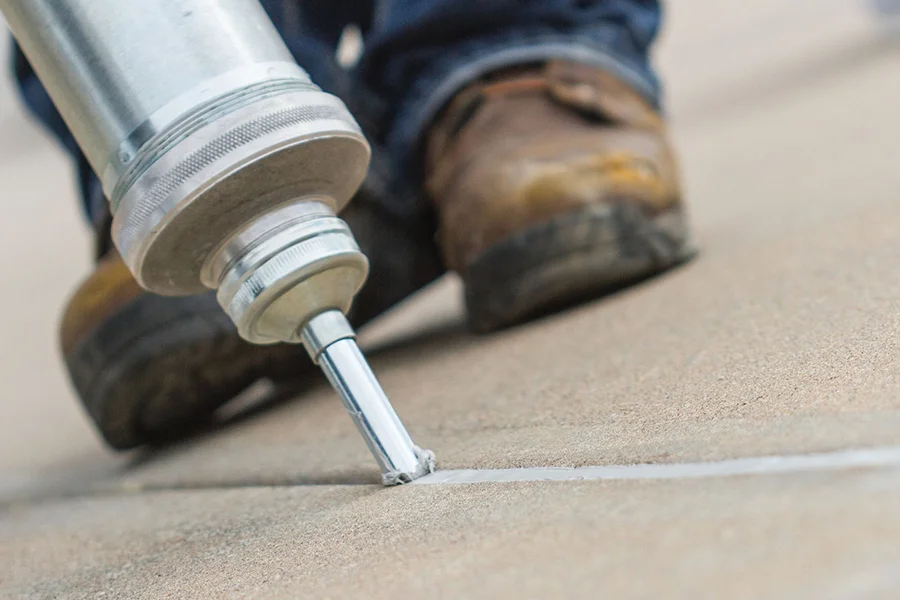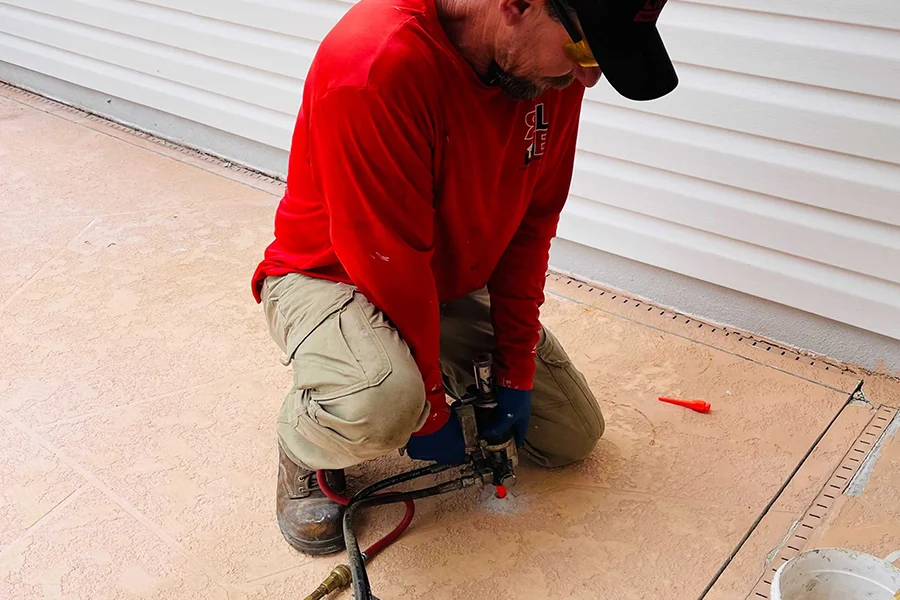Void Filling in Davenport, FL
In Davenport, FL, addressing foundation and soil stability issues is essential for maintaining the safety and value of your home. One effective method for solving problems related to soil voids is void filling. This technique is used to fill empty spaces beneath the surface, which can stabilize the soil and prevent foundation problems. Understanding void filling and its benefits can help you make informed decisions to protect your property.
- Financing Option
- Lifetime Warranty
- Free Estimates
- Upfront Pricing
See Why Our Customers From Davenport Loves Us!

About Davenport Foundation Repair
Davenport Foundation Repair is a leader in Davenport, FL, offering over 30 years of committed service in providing trustworthy and effective foundation repair services. Our reputable standing is grounded in integrity, high-quality workmanship, and a dedication to client satisfaction.
Our team of experienced professionals is equipped to handle both residential and commercial projects with accuracy and promptness. We recognize the essential role of a solid foundation and aim to deliver lasting solutions that exceed your expectations.
When you choose Davenport Foundation Repair, you select peace of mind and exceptional expertise in maintaining the structural soundness of your property. Our skilled team provides personalized solutions tailored to your specific requirements, ensuring the stability and longevity of your home or business. Trust us as your reliable partner in reinforcing the foundation that supports your investment.
Services We Offer:
What is Void Filling?
Void filling is a method used to address soil instability by filling empty spaces or voids beneath the surface. This process involves injecting a material into the voids to stabilize the soil and prevent further ground subsidence or settlement. The material used can vary, including concrete, foam, or other specialized substances, depending on the specific needs of the project.


Common Issues Void Filling Can Solve
Soil Settling and Erosion
Over time, soil can settle or erode due to natural processes or external factors, creating voids beneath the surface. Void filling injects material into these gaps to stabilize the soil and prevent further settling or erosion.
Foundation Shifts
If the ground beneath your foundation has voids or weak spots, it can lead to shifts or movement in the foundation. Filling these voids helps stabilize the foundation and prevent further structural issues.
Uneven Surfaces
Uneven or sunken areas in driveways, sidewalks, or other surfaces can result from underlying soil problems. Void filling can level these surfaces by filling the empty spaces beneath them, improving the overall appearance and functionality.
Potholes and Sinkholes
Potholes and sinkholes can form due to soil erosion or other factors, creating risks for your property. Void filling addresses these issues by filling and stabilizing the affected areas, preventing further damage and ground instability.

Why Homeowners Need Void Filling
For homeowners in Davenport, FL, void filling offers several important benefits that make it a valuable solution for maintaining the stability and safety of your home:
- Preventing Structural Damage: By addressing voids beneath the surface early on, void filling helps prevent minor issues from escalating into severe structural damage. It stabilizes the soil and supports the foundation, protecting the integrity of your home.
- Ensuring Safety: A stable foundation is crucial for the safety of your home and your family. Void filling helps maintain a solid foundation by filling gaps and preventing shifts or settling that could compromise the structural safety of your home.
- Improving Property Value: Addressing soil and foundation issues with void filling can help maintain or enhance your property’s value. Regular maintenance and timely repairs are essential for keeping your home in good condition and ensuring it remains a valuable asset.
- Avoiding Costly Repairs: Proactive void filling can prevent more extensive and expensive repairs in the future. By stabilizing the soil and addressing underlying issues early, you can save money and avoid more significant interventions later on.
Alternatives to Void Filling
If void filling is not the right solution for your specific situation, consider these alternative methods:
- Polyurethane Foam Injection: This involves injecting expanding foam into voids to lift and stabilize surfaces. The foam quickly fills gaps and provides support with minimal disruption.
- Slurry Grouting: Similar to void filling, slurry grouting involves injecting a mixture of water, cement, and additives into the ground. It’s effective for stabilizing soil and filling voids beneath foundations.
- Compaction Grouting: This technique injects a grout mixture to increase soil density and stability. It is effective for addressing loose or weak soils and preventing settlement.
- Mudjacking (Concrete Lifting): Mudjacking involves pumping a slurry mixture beneath concrete slabs to lift and level them. It’s a common method for addressing sunken or uneven concrete surfaces.
Searching for Void Filling Near Me? Call Us Today!
Void filling might be the perfect solution to stabilize your home and ensure its safety. At Davenport Foundation Repair, we specialize in void filling and other effective foundation repair techniques tailored to your specific needs. Our experienced team is dedicated to providing high-quality, reliable service to address your soil and foundation problems effectively.
Contact us today for a free consultation and learn how void filling can benefit your home. Don’t let minor soil issues turn into major problems—reach out to us to secure your home’s stability and protect your property.
Frequently Asked Questions (FAQs)
Common materials used for void filling include concrete, polyurethane foam, and specialized grout mixtures. The choice of material depends on the specific needs of the project, such as the size of the void and the type of soil.
The time required for void filling can vary depending on the size of the voids and the type of material used. Generally, the process can be completed within a few hours, with curing or hardening times ranging from 24 to 48 hours.
Void filling is generally considered a long-term solution for stabilizing soil and supporting foundations. However, the effectiveness of the repair can depend on ongoing soil conditions and proper maintenance.
Yes, alternatives to void filling include polyurethane foam injection, slurry grouting, compaction grouting, and mudjacking. Each method has its own advantages and is selected based on the specific soil and foundation issues.
Areas We Serve in Davenport, Florida
